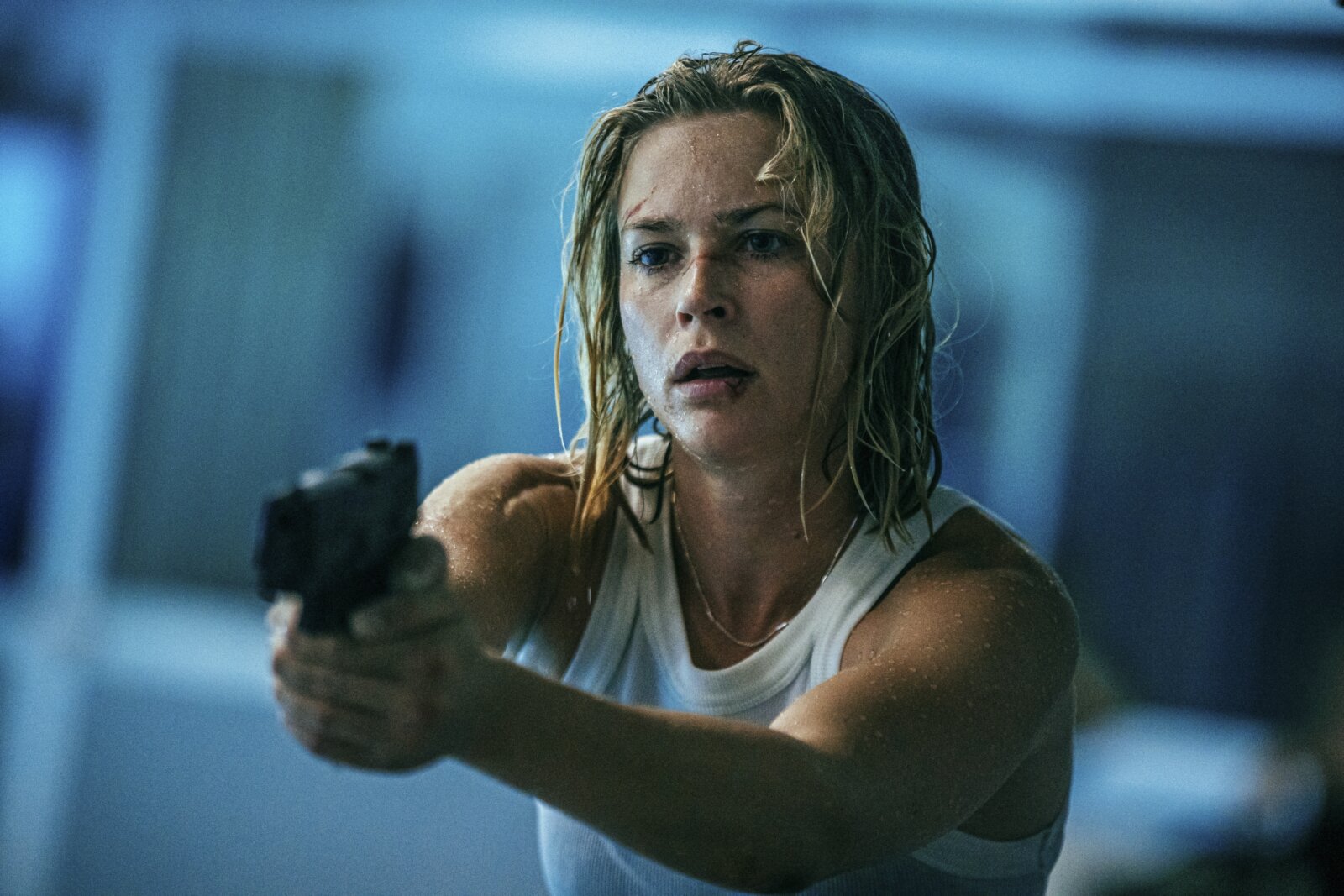 ★★★
★★★
“English? German? – ENGLISH? GERMAN??”
The term “Netflix Original” covers a range of productions, from pre-made movies they buy for distribution, through to movies commissioned from the ground up by the company. The results are equally variable. For every What Happened to Monday, there’s an Interceptor. This one came out of Germany: not exactly renowned for action, particularly action heroines. But it quickly and unexpectedly became the most-watched foreign language movie on the streaming service, worldwide. Does it deserve the success? We watched it and wrote up our thoughts independently, which have been edited and combined below. But, first: some introduction, and let’s find out what the movie is about.
Dieter: This movie was produced by long-established studio German Constantin Film, who in the 60s gave us the famous (or notorious, depending on your perspective) Karl May westerns, as well as German Edgar Wallace thrillers. It went bankrupt in the 70s but was saved and lead to new successes due to late producer Bernd Eichinger. He produced films such as The Never-ending Story, The Name of the Rose, House of Spirits, the first Fantastic Four movie (yes, that was German), the Resident Evil series and Downfall. After his death Constantin Film has mostly been hit and miss.
Interestingly, in the end credits you can see that Oliver Berben was involved in its production. Berben is a successful producer, now leading manager of Constantin Film, and son of well-known German actress Iris Berben, who played detective inspector Rosa Roth for a good 2 decades on TV. He has produced a number of movies with her in the leading role, as well other movies and countless TV productions. His most well-known movie might be Roman Polanski’s Carnage, with Jodie Foster. I’m not sure if this movie was produced by Constantin, then sold to Netflix, or if Netflix “ordered” Constantin Film to produce the movie. Looking at the results, I get the feeling this was from the get-go a collaboration between the two.
Jim: The heroine is Sara Wulf (Goursaud), a former Bundeswehr soldier, whose husband was killed in action, and who suffers from a touch of PTSD herself. She’s working to move to the US with her son, Josh, and has a visa appointment at the consulate in Frankfurt. But while she’s waiting to be seen, Josh vanishes. The consular chief of security, Erik Kynch (Scott) is sympathetic, until the surveillance footage shows Sara arriving alone. She’s locked up pending her being escorted off the premises. But, naturally, she escapes, and encounters a young woman (Abova), being held in an apartment in the complex. They agree to help each other – but it increasingly becomes clear that there’s a lot more going on than a missing child.
Dieter: Color me surprised when finding out the movie is… not bad at all. Actually, it is quite watchable. While the typical “diversity agenda” of Netflix is at play here, fortunately, there is no virtue-signaling, and I’m happy for it. I had some problems with Sara being a “special forces elite soldier” and “combat trained”. It’s true German soldiers were in Afghanistan but they were not involved in any combat missions but were mainly helping in re-building projects, or the training and aid of Afghani security forces. Since the end of World War II, Germany has had a strict rule of not getting involved in any military battles with the idea “that no war should ever come from Germany again”. So, a German soldier being involved in a direct military action, as scenes in this movie seem to indicate, is highly questionable.
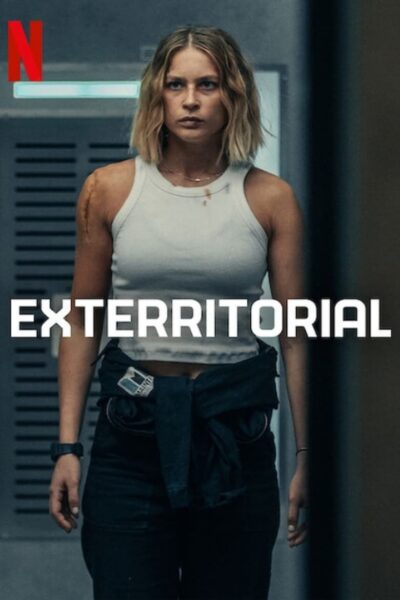 Also, German “elite forces”? I don’t know. I won’t say it is impossible: there are probably certain groups for specific tasks that I am not aware of. But having done my – at that time obligatory – army service in the Bundeswehr 30 years ago, I have my doubts. I’m willing to suspend my disbelief here. The movie echoes popular action thriller plots of the past such as Jodie Foster’s Flight Plan and Panic Room, Angelina Jolie’s The Foreign Son, and of course Liam Neeson’s Taken. So, the plot won’t win any awards for originality. It’s also happy to re-use elements from other sources: Tom Cruise window climbing; Mel Gibson shoulder dislocation; or a MacGyver-like improvised explosives.
Also, German “elite forces”? I don’t know. I won’t say it is impossible: there are probably certain groups for specific tasks that I am not aware of. But having done my – at that time obligatory – army service in the Bundeswehr 30 years ago, I have my doubts. I’m willing to suspend my disbelief here. The movie echoes popular action thriller plots of the past such as Jodie Foster’s Flight Plan and Panic Room, Angelina Jolie’s The Foreign Son, and of course Liam Neeson’s Taken. So, the plot won’t win any awards for originality. It’s also happy to re-use elements from other sources: Tom Cruise window climbing; Mel Gibson shoulder dislocation; or a MacGyver-like improvised explosives.
Jim: Yeah – I may have yelled, “A few household chemicals in the proper proportions” at the screen there! I thought this was entertaining. It’s main strength is Goursaud, who manages to be both a bad-ass and a vulnerable mother, often simultaneously. She comes across as fairly credible in the fights, even when going up against bigger opponents. The script puts some effort into establishing her credentials, and she has a lithe toughness to her which works well.
Dieter: You must understand: we Germans are pretty lousy when it comes to action movies. The few there are, usually have actors attempting a weak, second-rate impression of the American attitude of “Look how big my balls are”. This always feels fake, because we Germans simply don’t see ourselves like that. We have no problems seeing us in roles of evil Nazis or “the good German”, e. g. Armin Mueller-Stahl, but hardly ever as action heroes. That definitely has to do with our history, the idea of “German heroism” being exploited and abused by the Nazis. So at first I was going to dismiss the movie as not interesting.
Surprisingly, it doesn’t commit the usual mistake of making its protagonist an unbeatable heroine. To “do it the German way”, you must put things into a more nuanced context. We wouldn’t expect it from an American movie, but definitely would in a German one. I know it’s unfair to home-grown productions, but we judge them on a different basis. Yes, there is the early scene where Sara gets pushed around and immediately gets into combat mode (because… you know… PTSD). But I think it’s the only scene I found unbelievably overdone. I feared the movie would continue that way – but luckily it didn’t!
Instead, it shows that – in contrast to someone like Angelina Jolie in Salt – though she is “trained for this” as she says, the reality sets in quickly. Even a single man with some combat training is always in a better position and will eventually overpower her. If she wins a fight, it is because she uses everything at her disposal in her environment. There seems to be an extra shot of adrenaline when push comes to shove and her trauma sets in. Nothing is won easily for the protagonist here and female power fantasies are left at the door! The fact that Goursaud actually has some muscles, is a further plus.
Jim: There might be a bit less actual action than I expected, but what there is, is done well, with a couple of sequences edited together to look like a single take. The peak is likely a battle against two assassins in an apartment. It’s no Atomic Blonde, in length or quality. Then again, who is? I also appreciated the way she’s not infallible. Witness the way her first attempt to get around the consulate, ends in her bouncing off a balcony, and falling to the ground.
Dieter: The acting is for once not a distraction, as so often in German movies. German-French actress Goursaud is in most scenes very believable, playing a stressed mother as well as in combat mode. Lera Abova who plays the role of Russian Kira doesn’t fare quite so well. Despite being Russian, I never got the feeling that she was, and sometimes had problems understanding what she was saying: she definitely had no Russian accent either.
The big surprise was Dougray Scott, who last time I saw him, had a role in Desperate Housewives. I could imagine that a consular officer would react exactly as he did in the situations here. What really stood out were his German language skills, speaking fluently with only a very slight accent. You have to understand how difficult it is to speak German like that. The movie refers to it in the beginning, when Sara demonstrates to her son how his father spoke German with a broad American accent. Contrast a scene in Tomorrow Never Dies where Pierce Brosnan spoke in German and I couldn’t understand what he was saying. The language skills Scott demonstrates in this movie here are excellent. And I say that as a German. I was mightily impressed.
Jim: I noticed in the end credits that there were two dialogue coaches for him: one to speak German and the other to help him sound American. Seems like both did their job! Chris found no reason to complain about the latter, and she has an ear for that, both in English and Spanish (you should hear her eviscerate any non-Cubans trying to sound Cuban!). While I’m here, I noticed that the credits listed an “intimacy co-ordinator”. Weird, since there was nothing at all on screen to suggest one would be needed. Maybe Zübert is going to pull a Zack Snyder and realize an unrated cut, with all the missing sex and violence?

Dieter: The most fascinating thing for me was the consulate itself. I’ve never been in one, so I don’t know, but I could imagine that it might look like this. You get the feeling this is not just a building but almost its own village with an auditorium, conference and office rooms, warehouse, cafeteria, locker rooms, swimming pool, nursery, hospital room, guest apartments, truck departure hall and safety room. Are consulates really that big? Or was that made up? The movie is supposed to take place in Frankfurt, Germany’s fifth-biggest city, and early shots of the city and its central station are genuine. So I was quite surprised to read in the end titles “filmed in and around Vienna”. Aha…???
Jim: I was less enthralled with the story. There are points where it seems like a parade of clichés, such as the PTSD, which never serves much purpose. Or the scene at the end, where the villain lays out his plan to the heroine in all its intricate detail. It’s also crafted to raise questions, such as what would have happened if Sara hadn’t unilaterally decided to leave Josh alone in the consulate play-room? It’s certainly quite easy to come up with simpler ways for the bad guy to achieve his goals.
Dieter: The whole plot has a typical thriller solution which is a bit far-fetched and over-complicated. But I liked the idea of the villain of the piece giving an explanation for his actions. The previous day, I had seen Steven Soderbergh’s spy thriller Black Bag, and the characters’ emotions and motivations seemed thin, and not quite understandable. Kudos to the writers here for creating believable motives and emotions.
Jim: Despite my qualms about the script, it’s not significantly worse in this area than your typical straight-to-video actioner. That might be the best way to approach this, as a throwback to a simpler era, where one man – or woman now – could go up against a parade of enemies, and emerge battered but unbowed. I’m certainly happier to see my Netflix subscription used towards this kind of thing than overblown nonsense like The Electric State.
Dieter: A little tidbit: When I graduated, I briefly considered applying for jobs in German embassies overseas. One big drawback was being regularly required to move to other places in the world, making it difficult to settle anywhere and build a life. This is one reason the villain here gives for his acts and it absolutely made sense to me. But overall, this was a good action movie, and from Germany, no less. Even a believable, and perhaps the first real, girls with guns movie from here. It’s really astonishing to me. I expected this to fall flat on its face, especially when replicating American action formulas. But despite my utter disbelief something like this could be possible from my country, the film succeeds. Signs and wonders still do happen, as we used to say here!
Dir: Christian Zübert
Star: Jeanne Goursaud, Dougray Scott, Lera Abova, Kayode Akinyemi





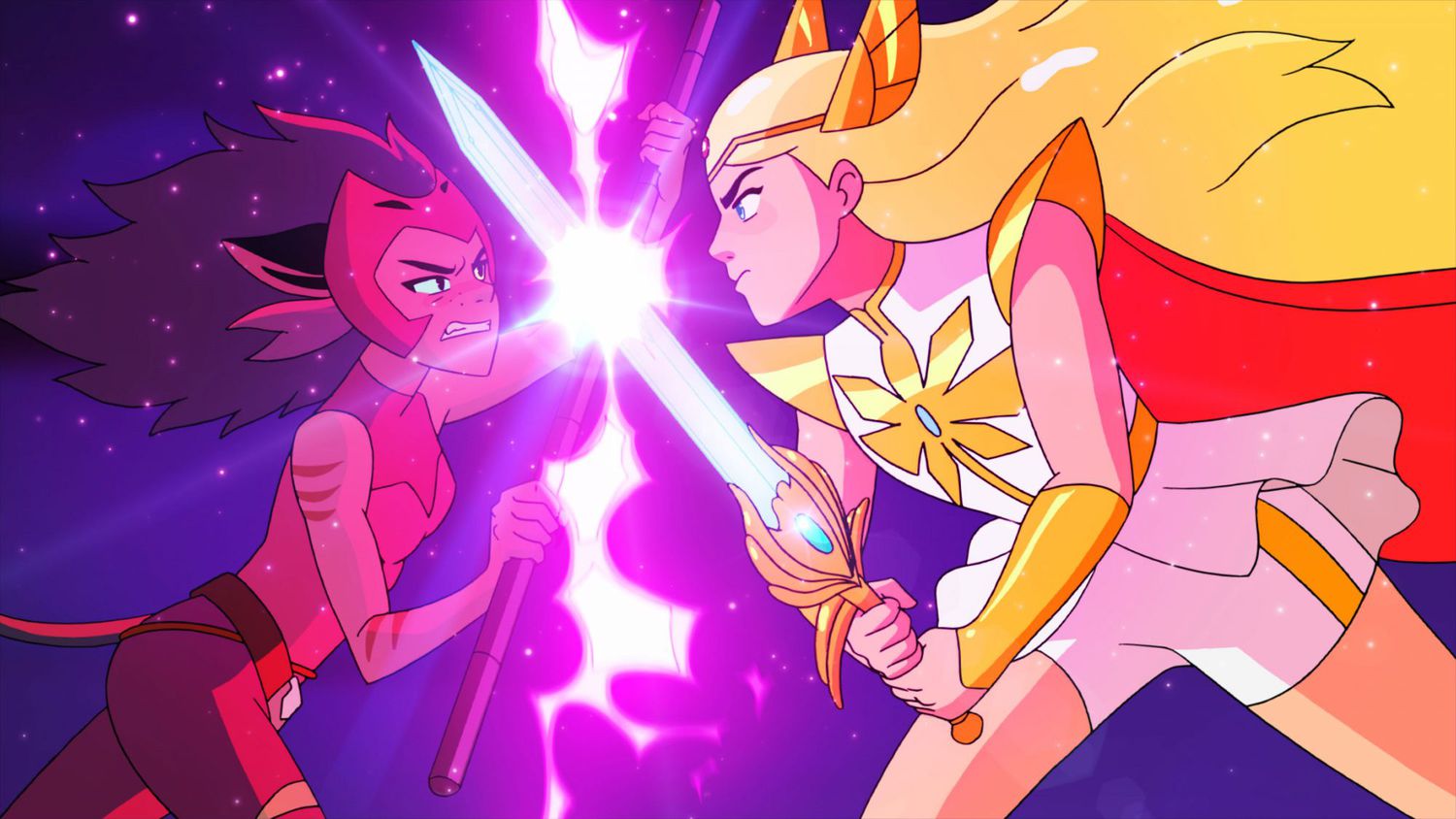 ★★★½
★★★½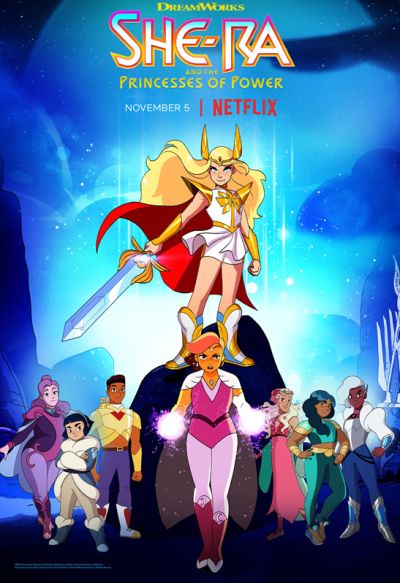 Though woke? Is it woke? Well… not in the sense I normally understand the word. For me, it means an agenda is being pushed. I can’t really say I see this here, unless the agenda is to stress that people exist who are not hetero-normative. Which… is true? The focus is on the story; we don’t get characters demonstrating against being sexually or politically repressed by the evil patriarchy, or talking about the problems of their gender orientation in modern society. This is no more woke than The Dragon Prince, another popular Netflix show. Part of the attention is probably due to creator ND Stevenson, who has stated he is – according to Wikipedia – “nonbinary, transmasculine and bigender,” as well as having bipolar disorder and ADHD. Well, whatever it is, is reflected in Stevenson’s work, in She-Ra as well as Netflix animated movie
Though woke? Is it woke? Well… not in the sense I normally understand the word. For me, it means an agenda is being pushed. I can’t really say I see this here, unless the agenda is to stress that people exist who are not hetero-normative. Which… is true? The focus is on the story; we don’t get characters demonstrating against being sexually or politically repressed by the evil patriarchy, or talking about the problems of their gender orientation in modern society. This is no more woke than The Dragon Prince, another popular Netflix show. Part of the attention is probably due to creator ND Stevenson, who has stated he is – according to Wikipedia – “nonbinary, transmasculine and bigender,” as well as having bipolar disorder and ADHD. Well, whatever it is, is reflected in Stevenson’s work, in She-Ra as well as Netflix animated movie 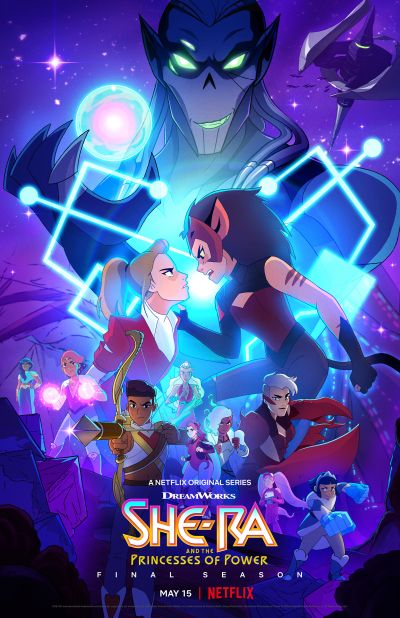 On the other hand, it’s clear this new spin on an old title has split fandom – or, rather, created a second fandom. This is not necessarily a good thing. It can result in embittered online wars and open hostility between members of different fan groups, both claiming ownership of “their story” and how it should be portrayed or interpreted. It’s not the only case. See franchises like Star Wars (George Lucas’ or the Disney version?) and Star Trek (“old Trek” vs. “new Trek”?). If you are as old as I am, you may even remember a time, long before Internet and personal computer communication existed, when people argued over if Kirk or Picard was the better captain, or Sean or Roger the better Bond. Change, it seems, always creates controversies. Therefore, the new show – as good as it is – has created a problem for the franchise that won’t be solved in a foreseeable future.
On the other hand, it’s clear this new spin on an old title has split fandom – or, rather, created a second fandom. This is not necessarily a good thing. It can result in embittered online wars and open hostility between members of different fan groups, both claiming ownership of “their story” and how it should be portrayed or interpreted. It’s not the only case. See franchises like Star Wars (George Lucas’ or the Disney version?) and Star Trek (“old Trek” vs. “new Trek”?). If you are as old as I am, you may even remember a time, long before Internet and personal computer communication existed, when people argued over if Kirk or Picard was the better captain, or Sean or Roger the better Bond. Change, it seems, always creates controversies. Therefore, the new show – as good as it is – has created a problem for the franchise that won’t be solved in a foreseeable future.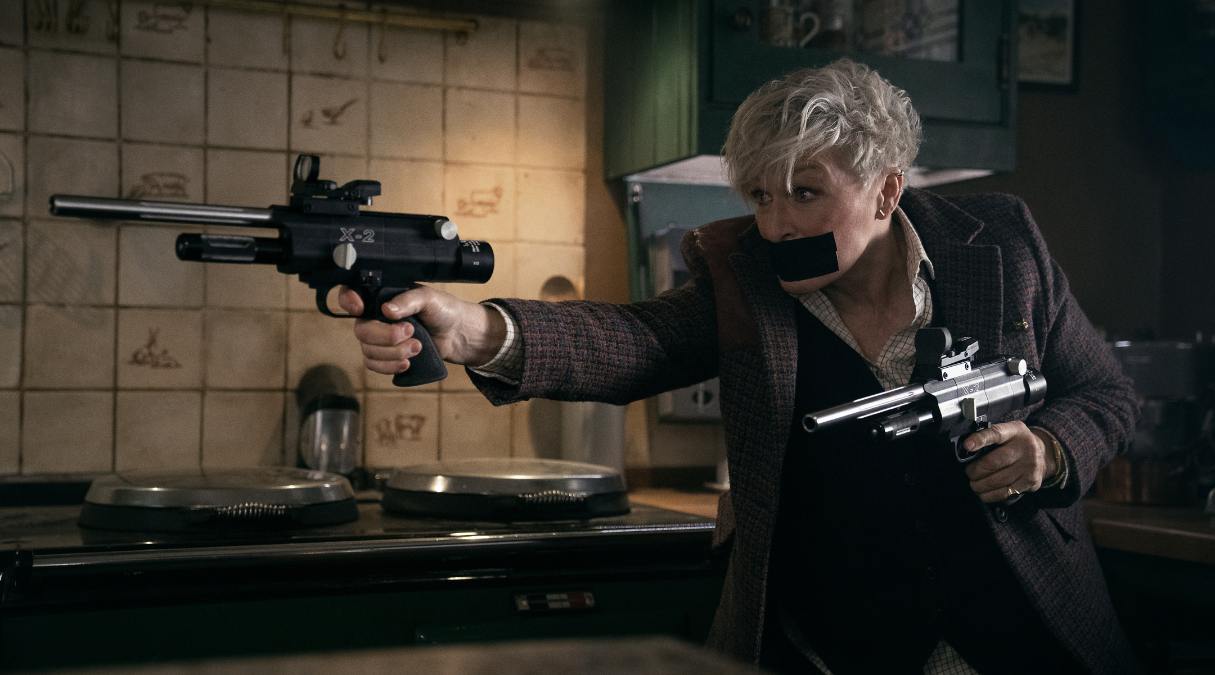 ★★★
★★★ Not long ago, I tagged
Not long ago, I tagged 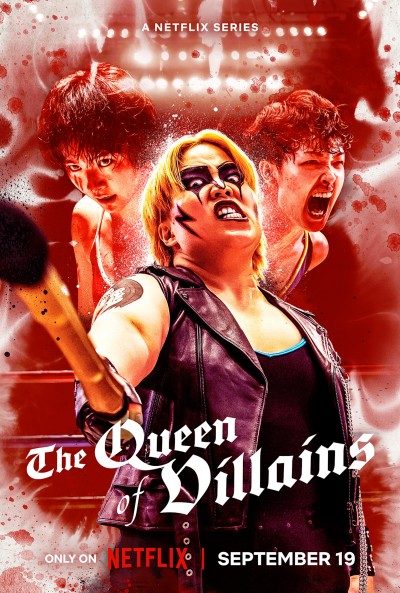 We all know professional wrestling is staged, with the outcomes predetermined, right? [Do not used the word “fake”: I will cut you!] Here, things are… murkier. This treads a delicate line between that and kayfabe, the wrestling term for promoting it as reality, and genuine competition. The stance here is interesting, suggesting that while those in charge, like promoter Toshikuni Matsunaga (Saitoh), can have a result in mind, that relies on those in the ring agreeing to it. This isn’t always the case [one wrestling show I remember attending definitely had a genuine fight, for backstage reasons], and here, Matsumoto is a loose cannon, prepared to go to any lengths to put herself over. Or her character: the lines are certainly blurred here, to the point of near invisibility.
We all know professional wrestling is staged, with the outcomes predetermined, right? [Do not used the word “fake”: I will cut you!] Here, things are… murkier. This treads a delicate line between that and kayfabe, the wrestling term for promoting it as reality, and genuine competition. The stance here is interesting, suggesting that while those in charge, like promoter Toshikuni Matsunaga (Saitoh), can have a result in mind, that relies on those in the ring agreeing to it. This isn’t always the case [one wrestling show I remember attending definitely had a genuine fight, for backstage reasons], and here, Matsumoto is a loose cannon, prepared to go to any lengths to put herself over. Or her character: the lines are certainly blurred here, to the point of near invisibility. Reaching the summit of Mount Everest once is a remarkable achievement, done by only a few thousand people in history, with hundreds having died in the attempt. But what about climbing the world’s highest peak on no less than
Reaching the summit of Mount Everest once is a remarkable achievement, done by only a few thousand people in history, with hundreds having died in the attempt. But what about climbing the world’s highest peak on no less than 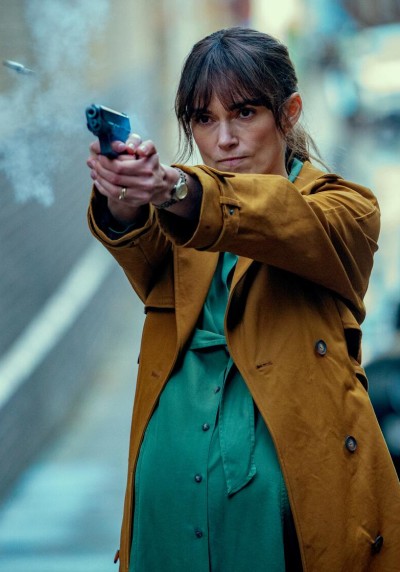 Reed calls in her top assassin, Sam (Whishaw), to protect Helen, fearing she might also be targeted. He has a history with Helen, dating back to before the birth of her children with Wallace. Things spiral out of control, involving the suspicious death of the Chinese ambassador, his missing daughter, a previous hit Sam botched, and Helen’s relentless pursuit of revenge, while trying to keep her family life intact. It’s a lot of balls to keep in the air, but the script does a fine job of avoiding confusion, with the wrap-up proving particularly admirable in its clarity. While I’ve read complaints about it being implausible, I have definitely seen worse. There’s room for both this, and more grounded spy shows like Slow Horses.
Reed calls in her top assassin, Sam (Whishaw), to protect Helen, fearing she might also be targeted. He has a history with Helen, dating back to before the birth of her children with Wallace. Things spiral out of control, involving the suspicious death of the Chinese ambassador, his missing daughter, a previous hit Sam botched, and Helen’s relentless pursuit of revenge, while trying to keep her family life intact. It’s a lot of balls to keep in the air, but the script does a fine job of avoiding confusion, with the wrap-up proving particularly admirable in its clarity. While I’ve read complaints about it being implausible, I have definitely seen worse. There’s room for both this, and more grounded spy shows like Slow Horses.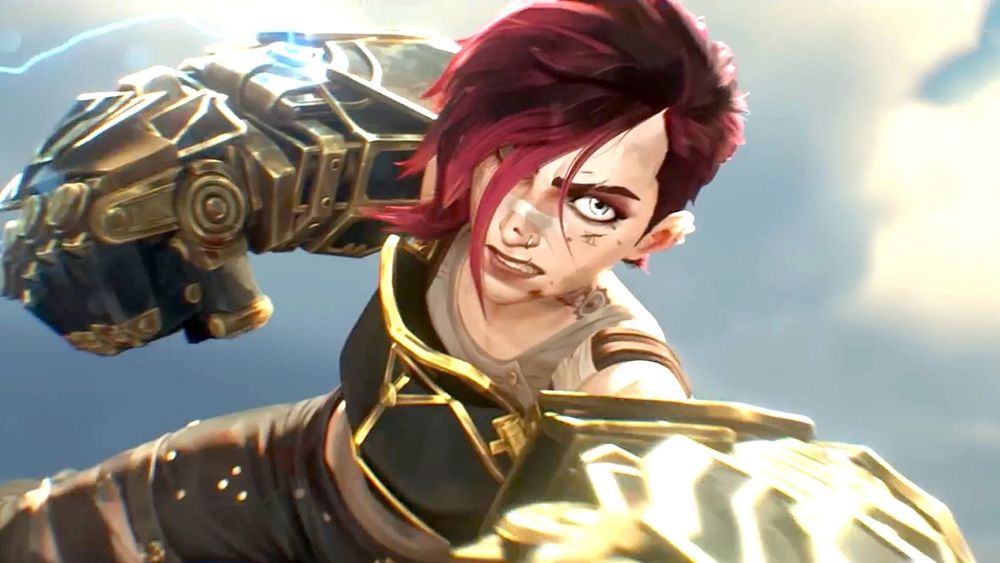 ★★★
★★★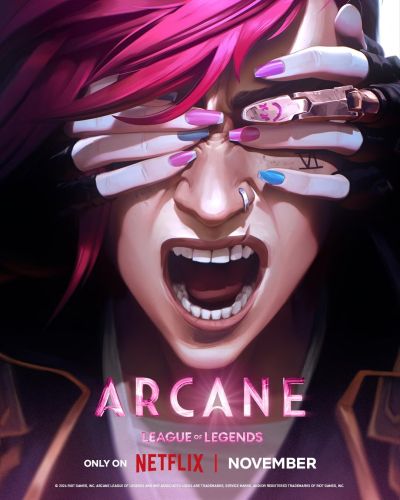 For this show, it means what would be enough for your average action movie or TV series, is just the beginning. It’s what I think makes the series above average in general. It always gives more than you asked for, and at the same time surprises you with sudden twists, unexpected developments, plus nuanced characterizations and relationships that escape standard black-and-white. Well, at least the
For this show, it means what would be enough for your average action movie or TV series, is just the beginning. It’s what I think makes the series above average in general. It always gives more than you asked for, and at the same time surprises you with sudden twists, unexpected developments, plus nuanced characterizations and relationships that escape standard black-and-white. Well, at least the 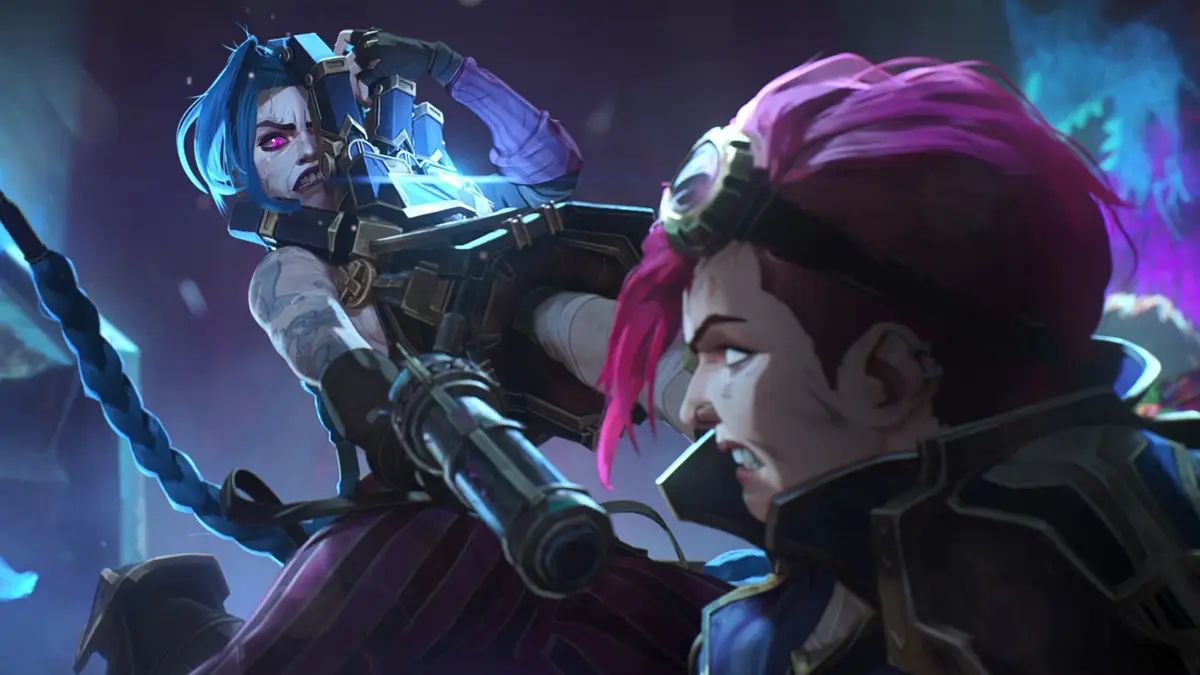 Why should the council accept Caitlyn as a new member, given she is only the daughter of Cassandra? Are political positions inherited in Piltover? If so, I’m not astonished the twin cities are having so many problems. Ambessa makes Caitlyn de facto commanding officer of the city and Caitlyn takes that position, only to backpedal an episode later. Why? If you want to tell an Emperor Anakin story, do so. But then go the full mile and
Why should the council accept Caitlyn as a new member, given she is only the daughter of Cassandra? Are political positions inherited in Piltover? If so, I’m not astonished the twin cities are having so many problems. Ambessa makes Caitlyn de facto commanding officer of the city and Caitlyn takes that position, only to backpedal an episode later. Why? If you want to tell an Emperor Anakin story, do so. But then go the full mile and 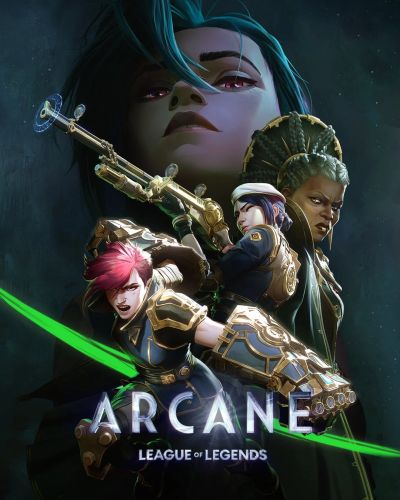 Disappointingly, the expected big final fight between Vi and Jinx is not to be found here: instead, they get along again after a bit of a brawl. Jinx the psycho? She seems quite normal again, after playing surrogate mother to the mute Isha for a couple of episodes. That’s far from any normal psychological reality. The screenwriters aren’t even above shamelessly milking nostalgia by giving us a flashback to Vander, Silco and the mother of Vi and Jinx sitting in “The Last Draw” – in a way it’s even repeated later again. Cheap, cheap, cheap!
Disappointingly, the expected big final fight between Vi and Jinx is not to be found here: instead, they get along again after a bit of a brawl. Jinx the psycho? She seems quite normal again, after playing surrogate mother to the mute Isha for a couple of episodes. That’s far from any normal psychological reality. The screenwriters aren’t even above shamelessly milking nostalgia by giving us a flashback to Vander, Silco and the mother of Vi and Jinx sitting in “The Last Draw” – in a way it’s even repeated later again. Cheap, cheap, cheap!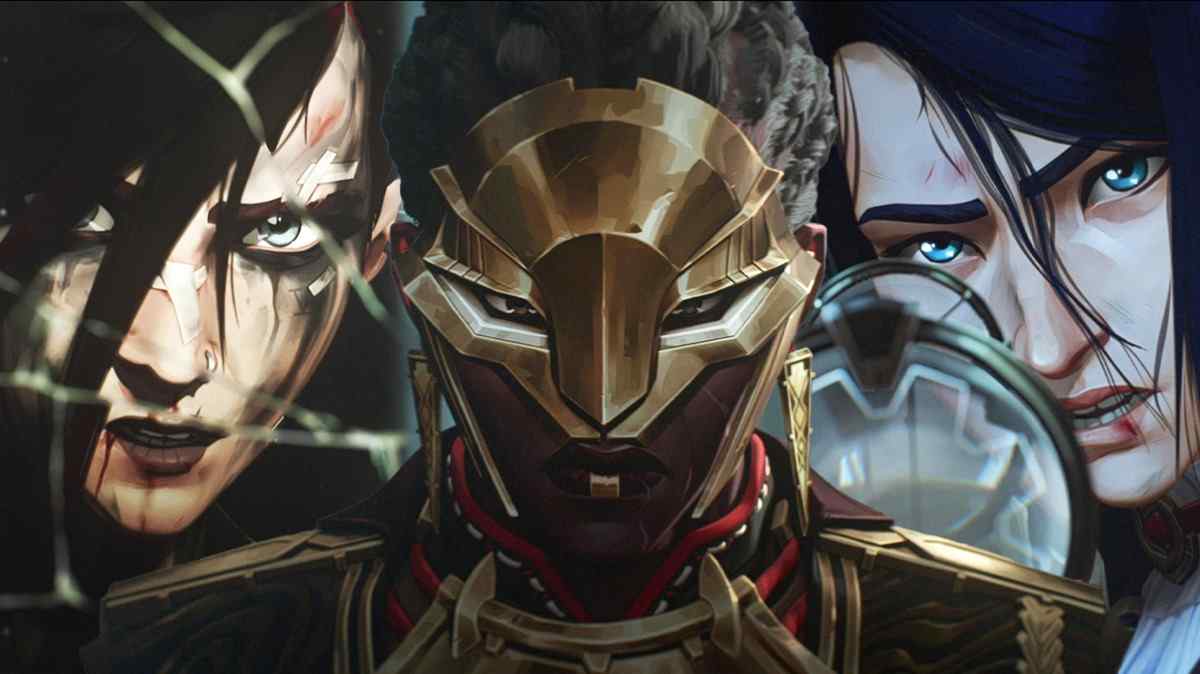 But there are also psychological and social themes of conflict: emotion versus intellect, safety versus liberty, preservation of the status quo versus progress by destruction of the existing system. These are best represented in sisters, Jinx and Vi, whose already shaky patchwork family has been torn into pieces by these battles. Yet it also shaped them, and put them on a collision course against each other. Or so it seemed, since the final confrontation is between Jayce and Viktor, while Jinx is given an unnecessarily bland, sacrificial death to save her sister – although the creators hint at the end that she may have survived. You could argue the character’s potential has been entirely wasted in the attempt to reshape her into a more positive protagonist in season two. I repeat: it feels absolutely weird. Looking at the titles of the first season I always expected the final fight to be between Jinx and Vi, and it feels like another broken storytelling promise.
But there are also psychological and social themes of conflict: emotion versus intellect, safety versus liberty, preservation of the status quo versus progress by destruction of the existing system. These are best represented in sisters, Jinx and Vi, whose already shaky patchwork family has been torn into pieces by these battles. Yet it also shaped them, and put them on a collision course against each other. Or so it seemed, since the final confrontation is between Jayce and Viktor, while Jinx is given an unnecessarily bland, sacrificial death to save her sister – although the creators hint at the end that she may have survived. You could argue the character’s potential has been entirely wasted in the attempt to reshape her into a more positive protagonist in season two. I repeat: it feels absolutely weird. Looking at the titles of the first season I always expected the final fight to be between Jinx and Vi, and it feels like another broken storytelling promise.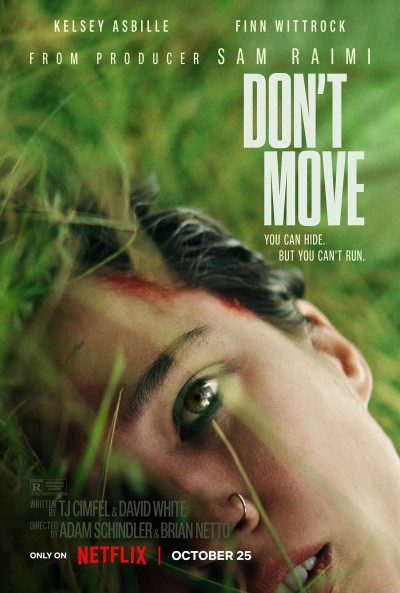 A somewhat gimmicky but adequately competent Netflix Original, I guess the moral here is that being abducted and stalked by a serial killer is the best kind of therapy. We meet Iris (Asbille) in the remote woods where her young son previously died. She never recovered, and is now standing on edge of a cliff, contemplating suicide. She’s interrupted by the arrival of a stranger, Richard (Wittrock), who talks her down. However, it turns out he has an ulterior motive: he wants to be the one to kill Iris. He tazes her, and while subsequently managing to escape, she has also been injected with a muscle relaxant that in twenty minutes will render her unable to move.
A somewhat gimmicky but adequately competent Netflix Original, I guess the moral here is that being abducted and stalked by a serial killer is the best kind of therapy. We meet Iris (Asbille) in the remote woods where her young son previously died. She never recovered, and is now standing on edge of a cliff, contemplating suicide. She’s interrupted by the arrival of a stranger, Richard (Wittrock), who talks her down. However, it turns out he has an ulterior motive: he wants to be the one to kill Iris. He tazes her, and while subsequently managing to escape, she has also been injected with a muscle relaxant that in twenty minutes will render her unable to move. 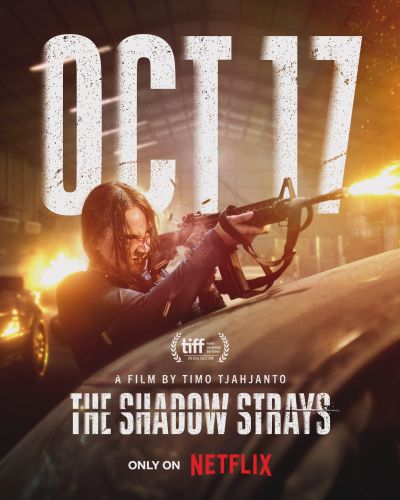 The Shadows are a sect of assassins, who are basically unstoppable. 13 (Ribero) is a teenage trainee, who screws up a mission in Japan alongside her instructor, Umbra (Malasan), and barely survives. 13 gets put on administrative leave, and her enforced idleness is where the problems start. In a thread strongly reminiscent of Leon, she watches a neighbour get killed by a gang, and takes care of the son, Monji. However, he vanishes, apparently abducted by the gang, and 13 isn’t standing for that. Beginning by turning low-level enforcer, Jeki (Emmanuel), she works her way up the power structure, which goes right to the top of Indonesian political society. The resulting chaos threatens to expose the Shadows, so Umbra is then dispatched to terminate their rogue agent.
The Shadows are a sect of assassins, who are basically unstoppable. 13 (Ribero) is a teenage trainee, who screws up a mission in Japan alongside her instructor, Umbra (Malasan), and barely survives. 13 gets put on administrative leave, and her enforced idleness is where the problems start. In a thread strongly reminiscent of Leon, she watches a neighbour get killed by a gang, and takes care of the son, Monji. However, he vanishes, apparently abducted by the gang, and 13 isn’t standing for that. Beginning by turning low-level enforcer, Jeki (Emmanuel), she works her way up the power structure, which goes right to the top of Indonesian political society. The resulting chaos threatens to expose the Shadows, so Umbra is then dispatched to terminate their rogue agent.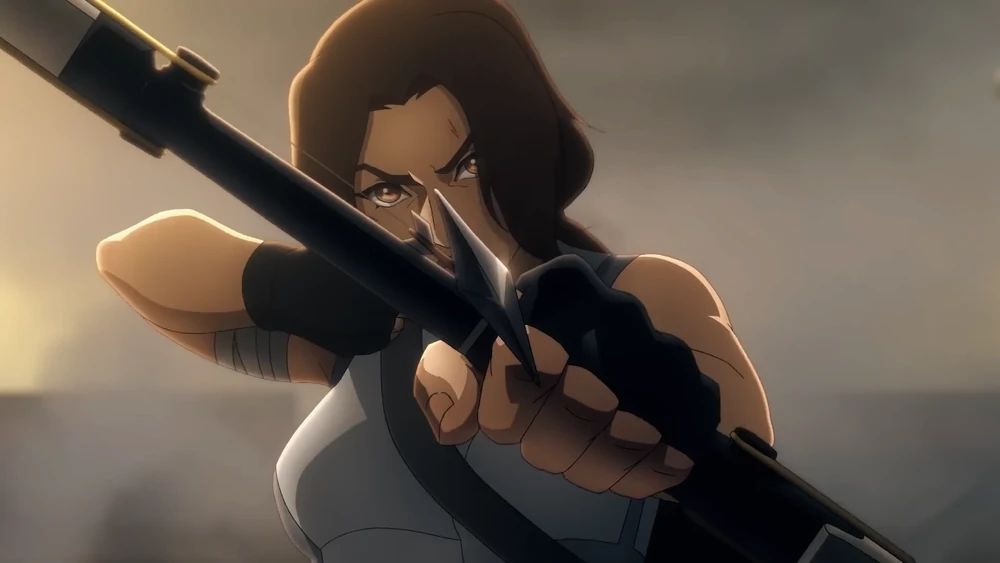 ★★★
★★★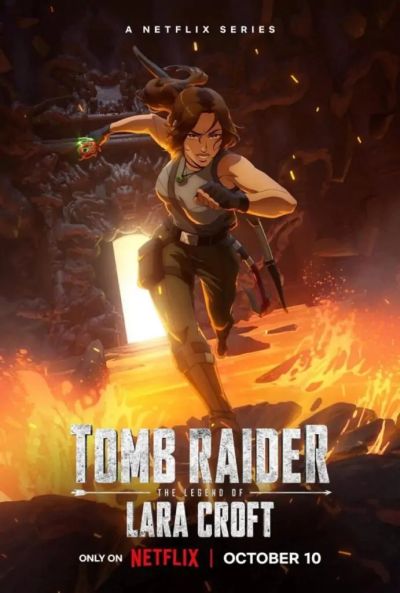 We begin with a prologue which sees Lara (Atwell) in Chile retrieving a box, alongside her mentor, Conrad Roth. Three years later, Roth is dead and Lara blames herself for that. She’s about to sell off all the family’s treasures, when the Chilean box is stolen by Charles Devereaux (Armitage). Turns out the stone it contains is the first in a series of four, which when combined will destroy the precarious balance under which the world operates. Along with sidekicks Jonah (Baylon) and Zip (Maldonado), Lara criss-crosses the globe, from China to Turkey to France, and back to China, trying to stop Devereaux from completing the set and unleashing the power they contain.
We begin with a prologue which sees Lara (Atwell) in Chile retrieving a box, alongside her mentor, Conrad Roth. Three years later, Roth is dead and Lara blames herself for that. She’s about to sell off all the family’s treasures, when the Chilean box is stolen by Charles Devereaux (Armitage). Turns out the stone it contains is the first in a series of four, which when combined will destroy the precarious balance under which the world operates. Along with sidekicks Jonah (Baylon) and Zip (Maldonado), Lara criss-crosses the globe, from China to Turkey to France, and back to China, trying to stop Devereaux from completing the set and unleashing the power they contain.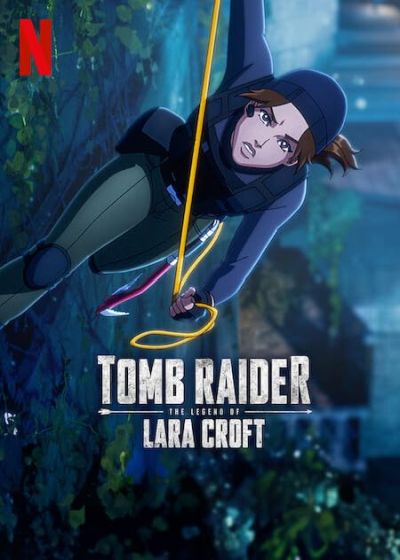 Filmed versions of Lara always seem to have her suffering from the loss of her father. This is the third such, after the Jolie and Vikander live-action versions. It should be noted this was not originally part of her imagined biography, which has changed several times over the years. Originally, she fell out with her family, when she decided to make adventure her lifestyle, earning her living as a travel writer, instead of marrying the Earl her parents had chosen for her. Her big defining moment was surviving alone for two weeks in the Himalayas after a plane accident. It was only after the Jolie films and the reboot games, it became that she had lost both parents.
Filmed versions of Lara always seem to have her suffering from the loss of her father. This is the third such, after the Jolie and Vikander live-action versions. It should be noted this was not originally part of her imagined biography, which has changed several times over the years. Originally, she fell out with her family, when she decided to make adventure her lifestyle, earning her living as a travel writer, instead of marrying the Earl her parents had chosen for her. Her big defining moment was surviving alone for two weeks in the Himalayas after a plane accident. It was only after the Jolie films and the reboot games, it became that she had lost both parents.